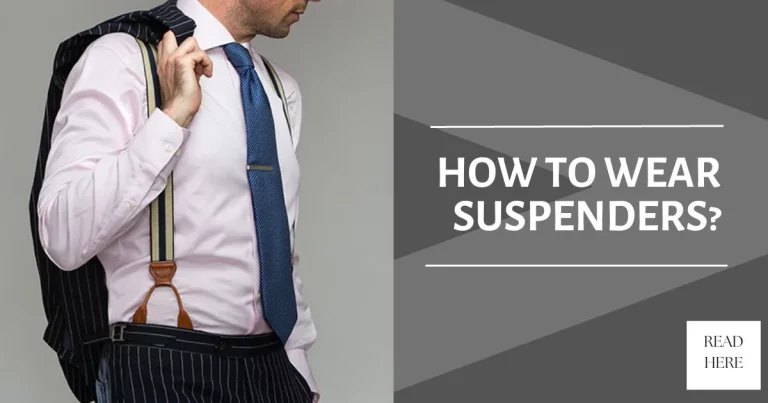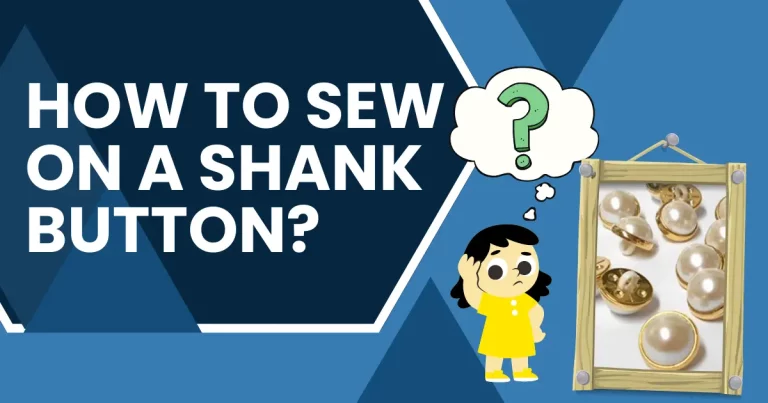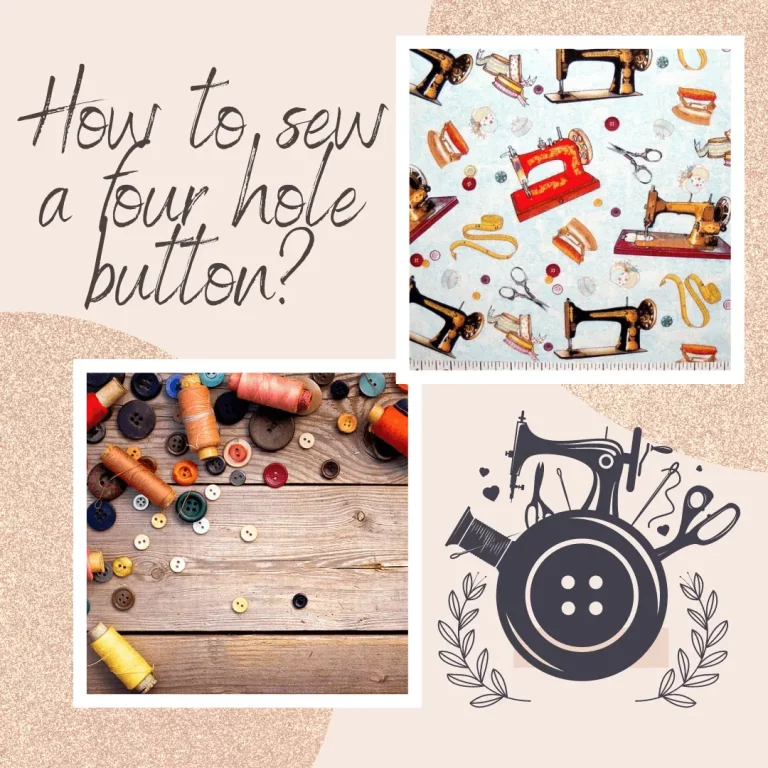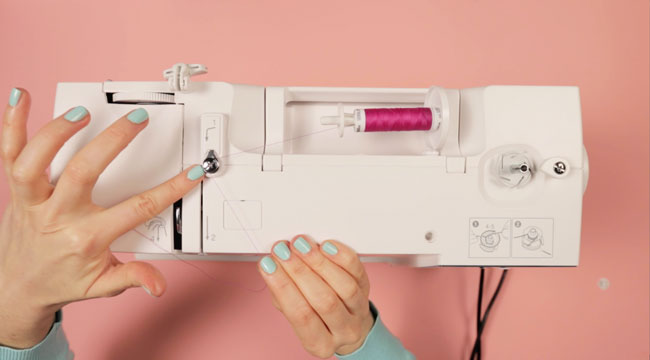How To Sew A Dart – Easy DIY Guide
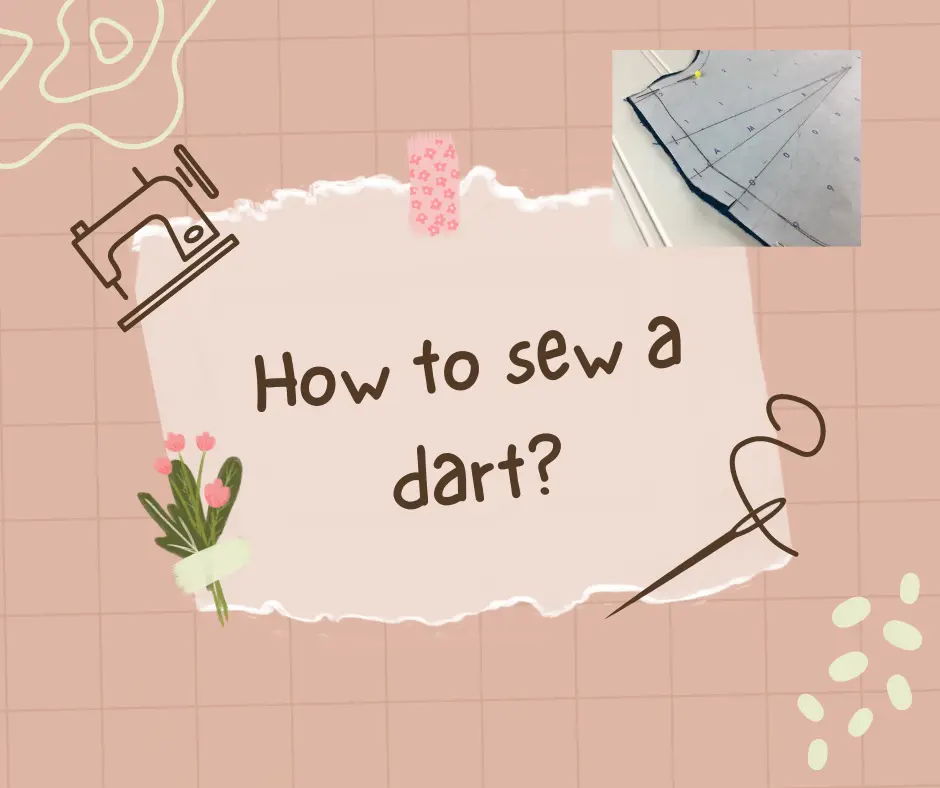
Introduction
What Is a Dart in Sewing?
A dart is a folded and stitched wedge in fabric. It helps shape clothes so they fit the body better. You’ll see darts in blouses, dresses, skirts, and pants. They give fabric a smooth, tailored look without extra seams.
Why Darts Are Essential for Garment Fitting
Darts are small but powerful. They let flat fabric follow natural body curves. Without darts, clothes look loose, baggy, or awkward. With darts, your clothes sit better on the waist, bust, or hips. This is why almost every tailored piece has them.
Common Mistakes Beginners Make When Sewing Darts
- Uneven darts – caused by poor marking or folding.
- Puckered dart points – happens when you don’t taper smoothly.
- Skipping pressing – not ironing darts makes them bulky.
- Wrong dart placement – sewing outside the marked line changes the fit.
Learning darts takes practice, but once you get it right, your sewing looks professional in projects, whether you are a novice or an expert sewer. The result will be wonderfully fitted clothes that will make you feel good about yourself and fashionable.
Tools & Resources Needed
Before sewing a dart, gather your tools. Having the right items makes the process easier and cleaner.
Essential Tools
- Sewing machine or needle and thread – You can sew darts by machine or hand.
- Fabric marking tools – Tailor’s chalk, tracing paper, or washable fabric pens work best.
- Pins or clips – These hold the fabric in place while folding the dart.
- Sharp scissors – Use them to cut fabric or trim loose threads.
- Measuring tape or ruler – Helps you mark darts with accuracy.
- Iron and ironing board – Pressing darts makes them flat and professional.
👉 Before sewing darts, make sure your markings are accurate. Learn more in our Guide to Measuring Tools in Sewing.
Why These Tools Matter
- Marking tools keep your lines straight.
- Pins prevent fabric from slipping.
- Pressing with an iron gives your dart a smooth finish.
With these basics ready, you’ll avoid frustration and focus on sewing clean darts.
How to sew a dart? Step by step
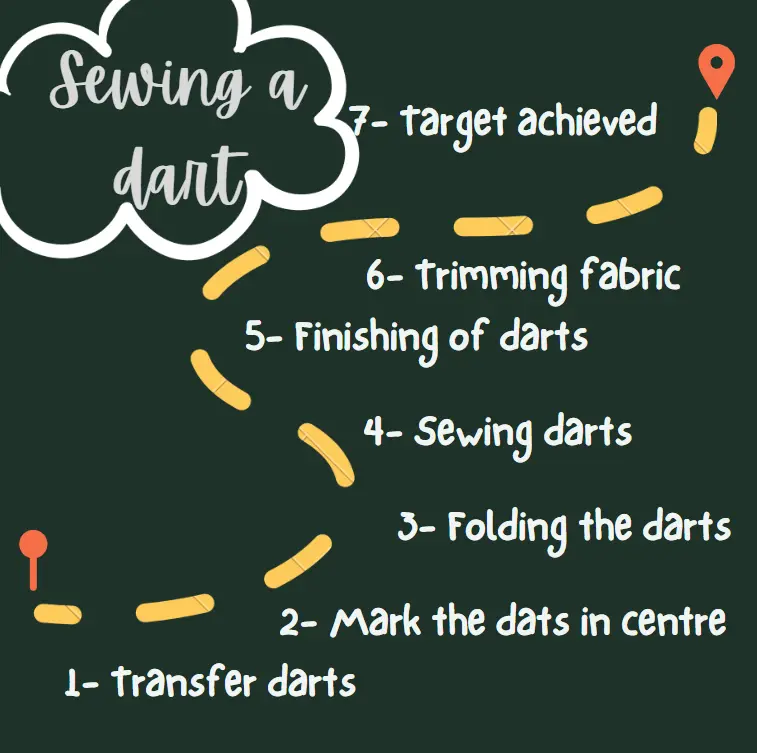
Step-by-Step Guide: How to Sew a Dart
Step 1 — Marking the Dart on Fabric
- Start by transferring the dart lines from your pattern onto the fabric.
- Use tailor’s chalk, a washable fabric pen, or tracing paper for clean markings.
- Double-check both sides so your darts match.
- Accurate marking is key to symmetry and a neat finish.
Step 2 — Folding the Fabric
- Fold the fabric with the right sides facing each other.
- Bring the dart legs together so the lines match.
- Pin along the marked line to hold the fold in place.
- This step keeps the dart sharp and steady while sewing.
Step 3 — Sewing the Dart
- Begin stitching at the wide end of the dart.
- Sew straight along the marked line toward the dart point.
- As you near the tip, shorten your stitch length for a smooth taper.
- Do not backstitch at the point—tie off the threads instead.
- This prevents puckering and keeps the dart flat.
Step 4 — Pressing the Dart
- After sewing, press the dart with a hot iron.
- Press downward or toward the garment center, depending on dart type.
- Use a tailor’s ham for curved darts to keep their shape.
- Pressing makes the dart blend naturally into the fabric.
Types of Darts in Sewing
Not all darts are the same. Each type shapes fabric differently and suits different garments.
Bust Darts
Bust darts add shape around the chest area. You’ll see them in blouses and dresses. They help fabric curve smoothly over the bust without wrinkles.
Waist Darts
Waist darts narrow the waistline for a closer fit. They are common in skirts, trousers, and fitted tops. By removing excess fabric, they make the waist look more defined.
French Darts
French darts run at an angle, often starting from the side seam. They create a curved shape that follows the body’s natural lines. They work well in dresses and tops that need elegant shaping.
Shoulder Darts
Shoulder darts give structure near the neckline or shoulders. They appear in jackets, blazers, and fitted tops. These darts help the garment sit properly without gaping.
Common Mistakes & How to Fix Them
Even skilled sewists run into dart problems. The good news? Most issues have simple fixes.
Puckered Dart Points
A dart point looks lumpy when the stitching ends too sharply.
Fix: Taper your stitches as you reach the point.
Tie off the threads instead of backstitching. This keeps the finish smooth.
Uneven Darts
When one dart is higher or longer than the other, the garment looks crooked.
Fix: Take time to mark darts carefully on both sides.
Use a ruler or tracing paper so lines match perfectly.
Dart Too Long or Too Short
A dart that ends in the wrong spot changes the fit of the garment.
Fix: Adjust the pattern before cutting fabric.
Bust darts should stop about an inch before the fullest part. Waist darts should end at the natural waistline.
Pro Tips from Experience
A few small changes can make your darts look sharp and professional.
Keep Tension Consistent
Uneven machine tension causes puckers and loose stitches. Test your machine on scrap fabric first. Adjust until stitches look smooth and even.
Shorten Stitch Length Near the Point
A smaller stitch length blends the dart point into the fabric. Start with normal stitches, then shorten as you get close to the tip.
Use a Tailor’s Ham When Pressing
Pressing is where darts truly come to life. Place the dart over a tailor’s ham to shape the curve. This helps the fabric mold naturally to the body’s shape.
Real-Life Example (Personal Story)
When I first sewed darts on a dress, they came out bulky and uneven. The shape didn’t look right, and I almost gave up. Then I learned the trick of pressing darts over a tailor’s ham. Suddenly, the fabric curved smoothly, and the dress fit beautifully. That small change gave me the confidence to keep sewing.
Best Practices & Maintenance
Follow these habits, and your darts will look sharp every time:
- Test first. Always sew a dart on scrap fabric before working on the real piece.
- Press with steam. A steamy iron helps darts lay flat and smooth.
- Choose a good thread. High-quality thread avoids breakage and gives longer-lasting seams.
These small steps make a big difference in your sewing results.
Conclusion
Darts may seem tricky at first, but they’re the secret to clothes that fit well.
They add shape, improve comfort, and make garments look professionally made.
Start simple—practice darts on old fabric scraps before moving to your project.
The more you practice, the smoother they’ll get.
Now it’s your turn: try sewing a dart today.
And if you’re proud of your results, share your sewing story with others.


